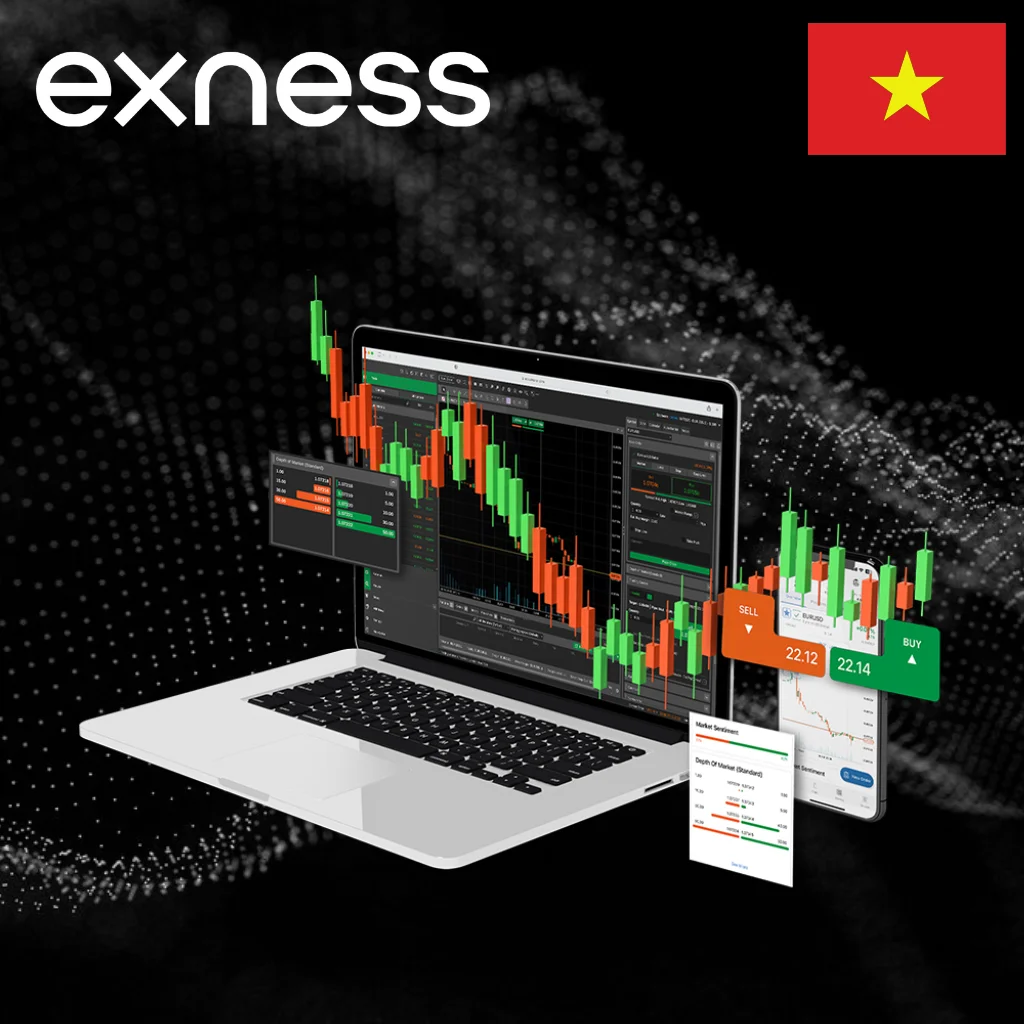Why Are Trading Hours Important?
The Forex market operates continuously 24 hours a day, 5 days a week. However, not all times provide the same conditions. Price volatility, trading volume, and market reaction speed vary depending on the time frame.

- Different liquidity levels: When the London and New York markets overlap, trading volume usually peaks, and prices move faster.
- Fluctuating transaction costs: Spreads can be lower during peak hours but widen significantly when fewer participants are active.
- Time-based strategies: News-based traders focus on the U.S. session, while those preferring smaller movements often choose the Asian session.
- Overnight risks: Holding positions into another session can cause unexpected price swings, especially during major news releases.
Understanding these characteristics helps traders organize their schedules, allocate capital, and avoid hasty decisions, which is especially important when participating in Exness social trading.
Exness Trading Hours by Market Session
Exness follows GMT+0 (standard international time) and displays trading hours on the platform according to the user’s computer time zone. This means that when you log in, the opening and closing times of each session are synchronized with your system clock.
Below is a summary of the main sessions’ opening times (Vietnam time – GMT+7):
| Session | Opening Time | Closing Time | Characteristics |
|---|---|---|---|
| Sydney | 04:00 | 13:00 | Low liquidity, slight volatility |
| Tokyo | 06:00 | 15:00 | Strong influence on JPY pairs |
| London | 15:00 | 00:00 | High volume, stable spreads |
| New York | 20:00 | 05:00 | High volatility, frequent major news |
Key Points to Note:
- When the London and New York sessions overlap (20:00–00:00 Vietnam time), the market is usually the most active.
- The Asian sessions (Sydney and Tokyo) show lower volatility, making them suitable for short-term or accumulation strategies.
- Early Monday mornings and late Friday sessions often have lower liquidity than usual.
Exness Trading Hours by Product Type
Not all financial products on Exness follow the same trading schedule. Each asset group has specific opening and closing times, and these can also vary slightly depending on Exness account types. Traders need to be aware of these to avoid placing orders outside active hours and to take advantage of the most active sessions.
Forex:
- Operates 24 hours/day, from Monday 04:00 (Vietnam time) to Saturday 04:00.
- Market pauses on weekends.
- This group has the best liquidity, with four main sessions: Sydney, Tokyo, London, and New York.
Metals (Gold, Silver, Platinum, Palladium):
- Gold (XAU/USD) and Silver (XAG/USD) usually open from 06:05 Monday to 04:55 Saturday (Vietnam time).
- There is a short daily break for liquidity maintenance (typically from 04:55 to 06:05).
- During this break, spreads may widen significantly, so many traders avoid opening positions at this time.
Indices and Stock CFDs:
- Each index follows the schedule of its native exchange:
- US30, US500: open from 20:00 to 05:00 (aligned with the U.S. market).
- DE40 (Germany): open from 14:00 to 23:00.
- Stock CFDs depend on their listed exchange, usually following U.S. or European schedules.
Energy (Crude Oil, Natural Gas):
- USOIL and UKOIL open from 06:00 Monday to 04:55 Saturday.
- Short maintenance breaks occur early morning (similar to metals).
Cryptocurrency:
- Trades 24/7 with no weekend breaks.
- This is the only product with continuous liquidity, even when the Forex market is closed.
- However, crypto volatility is usually higher and less predictable.
Summary of Exness Trading Hours by Product Group (Vietnam Time – GMT+7)
| Product Group | Opening Time | Closing Time | Notes |
|---|---|---|---|
| Forex | Monday 04:00 | Saturday 04:00 | Operates 24h, breaks on weekends |
| Gold, Silver | Monday 06:05 | Saturday 04:55 | Daily break 04:55–06:05 |
| Indices | Exchange-based | Exchange-based | e.g., US500 20:00–05:00 |
| Energy | Monday 06:00 | Saturday 04:55 | Includes short scheduled breaks |
| Cryptocurrency | Continuous | No close | Operates 24/7 |
How to Choose the Right Trading Time
Just because the market is open doesn’t mean trading will always be effective. Investors often select time frames based on their strategy and the products they focus on.
Some Suggestions:
- Short-term trading (scalping): Prioritize the London–New York overlap (20:00–00:00) to benefit from high liquidity and low spreads.
- Trend trading (swing trading): Positions can be opened during the Europe–U.S. sessions and held for several days.
- Gold trading: The strongest volatility occurs during the U.S. session, especially when economic data is released.
- Cryptocurrency: Can be traded at any time, but the U.S. session often shows the highest volatility.

Summary of Time Selection:
- Asian session: Suitable for beginners, with mild volatility.
- Europe–U.S. overlap: High volume and opportunities, but risks are also greater.
- Weekends: No Forex trading, only cryptocurrency remains active.
Important Notes on Exness Trading Hours
Understanding the opening times is not enough; traders should also consider factors that directly impact costs and strategy effectiveness. Some elements are often overlooked but carry significant importance in practice, which is why resources like the Exness leverage guide can be very useful.
Spreads Change by Session
Spreads are not fixed—they fluctuate with market liquidity:
- During peak hours (London–New York overlap), spreads are usually tighter.
- When the market is quiet (early week, late week, or during maintenance breaks), spreads can widen significantly.
- Trading large volumes during widened spreads can increase costs considerably.
Technical Breaks
Some products (such as gold, oil, and indices) have short daily breaks for liquidity systems to refresh pricing:
- Usually occur early morning between 04:55–06:05 (Vietnam time).
- During these breaks, traders cannot open or close positions.
- When the market reopens after the break, prices may differ significantly from previous levels.
Impact of Economic News
Major economic reports can trigger sharp price movements, for example:
- U.S. Nonfarm Payroll (NFP)
- CPI, GDP releases
- Interest rate decisions from the FED, ECB, BOJ
These are typically announced during the U.S. session. At such times, prices can move sharply within seconds, and spreads may widen. News traders often target these windows, while purely technical traders may avoid them due to high risk.
International Holidays
Beyond weekends, markets are also affected by holidays in major financial centers. For example:
- Christmas and New Year (Europe and U.S.)
- U.S. Independence Day (July 4)
- Easter holidays in Europe
During these periods, liquidity decreases significantly, and trading hours may be shortened. Placing large orders can lead to slippage, which is why many beginners prefer to start with smaller positions after meeting the Exness minimum deposit requirement.
Tips to Optimize Trading with Exness Hours
Knowing the trading schedule is just the first step—applying it effectively provides a real edge, especially when using Exness MT5 for precise market timing:
- Choose products that match your time zone: For example, if evenings are free, the Europe–U.S. session is more suitable.
- Avoid trading right at market openings: Early Mondays or immediately after maintenance breaks often bring irregular price swings.
- Track the economic calendar: Being aware of scheduled announcements helps decide whether to hold positions or stay out.
- Combine technical analysis with session timing: A chart pattern during low-liquidity hours is less reliable than one formed in the U.S. session.
- Keep personal notes: Each trader should maintain a journal to identify which times work best for their strategy.
Quick Summary:
- Trade during overlapping sessions to leverage liquidity.
- Avoid technical breaks and early-week volatility.
- Always check economic news before entering positions.
- Match product trading hours with personal daily routines.
Conclusion
Mastering Exness trading hours not only prevents placing orders outside permitted times but also helps select the most optimal windows to maximize liquidity, reduce costs, and control risks. Each session has unique characteristics: the Asian session is more stable, the Europe–U.S. overlap is highly active, while crypto remains open 24/7. These differences create opportunities for various trading styles, from scalping to long-term holding, and they also highlight the strengths of Exness vs competitors in adapting to diverse market conditions.

